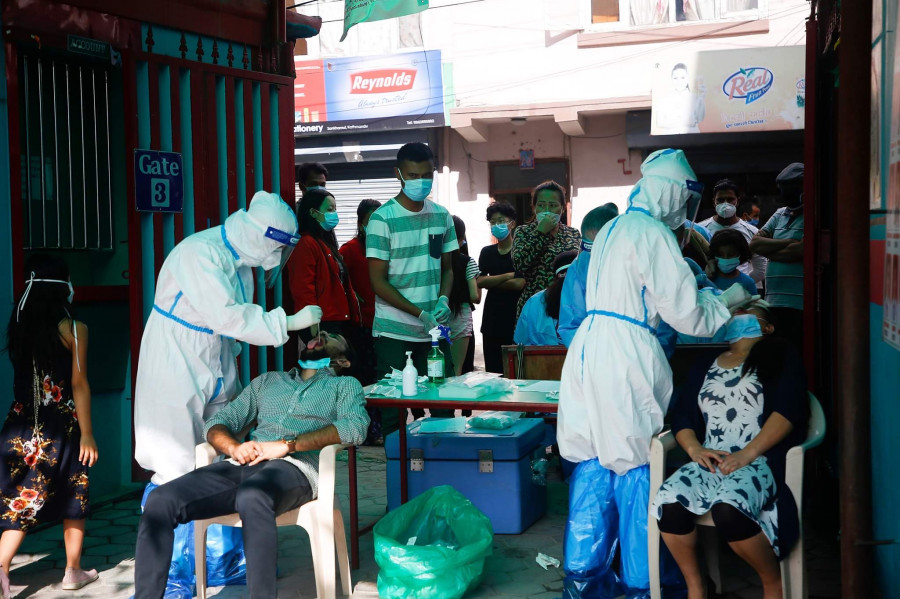Editorial
Test, trace, contain
We cannot afford to let this window of opportunity slip by.
In June, Health Ministry officials estimated Covid-19 infections to double within a week, saying cases could peak at 20,000 with deaths between 400 to 500. Officials later revised the infection estimate at 45,000. While the current national tally stands at 28,938 infections and 120 deaths, a fresh revision by the ministry estimates that the cases could cross the 90,000 mark.
While the epidemiological model used by the ministry is unclear and off public domain, a 'confidential' report by Oxford Policy Management and the University of Oxford is also doing the rounds in Nepal. The study, commissioned by the Department for International Development, developed the SEIR (susceptible-exposed-infectious-recovered) model to estimate the trajectory of Covid-19 and analysed the impact of three disruption strategies—low, medium and high.
While the study explicitly states that its analysis is a rough estimate of potential future scenarios and is based on various assumptions and thereby limited and subject to change, Oxford Policy Management, which is currently advising the ministry, prescribes implementing and reviewing a high disruption strategy since it 'seems to' significantly avert the burden of the disease.
As per the study, the low disruption strategy estimates 81 percent of the population to be infected by the end of the year, the peak of which would occur between June and September. It also estimates 49,200 deaths by year end, which would be roughly 25 percent of all-cause mortality. Similarly, a medium disruption strategy would reduce the burden by approximately 5,000 cumulative deaths, accounting for 23 percent of all-cause mortality by year end, and peak infections would occur between July and October.
The high disruption strategy would see the lowest number of deaths, reducing the cumulative mortality by approximately 15,800 deaths, accounting for 19 percent of all-cause mortality by year end while peak infection would occur between June and September.
As startling and astronomical as these projections are, cases have spiked exponentially following an increasing number of tests and the abrupt lifting of the lockdown last month. On Tuesday, the ministry reported the highest daily spike of 1,016 cases, including the Kathmandu Valley which reported its most single-day infections at 205 after reporting more than 100 cases daily for over a week.
The government, on Tuesday, also authorised district administrators to issue prohibitory orders, following which chief district officers have issued stern restrictive measures for the Valley for seven days. Similar restrictions are in force at select districts, cities and municipalities identified as red zones since last month; but what has been long clear is that restrictions, call it lockdown or not, will work only if we increase community testing followed by a strategy that can trace, isolate and quarantine susceptible cases in order to prevent people from exposure to the disease.
If it serves any warning to heed, the aforementioned study anticipates that there will be significant pressure to treat Covid-19 cases. Epidemiologists stress community testing to identify cases and trace their contacts effectively in order to understand the scope of transmission and also to contain further spread of the disease. We cannot afford to let this window of opportunity slip by. To break the chain of transmission, the mantra remains the same—test, trace, contain.
The four-month-long lockdown pushed the country to the brink of chaos, manifesting in physical, psychological and economic consequences for the masses. With next to nothing to cushion the social and economic impacts of disruption, the government has also done little to prepare and upgrade its healthcare capacity as the number of Covid-19 patients in need of ICU beds and ventilators increases.
The government cannot repeat the same errors over and over again. By granting discretionary powers to district administrators, the government has also isolated itself from its responsibilities towards the public. This is not how a pandemic is contained.




 16.12°C Kathmandu
16.12°C Kathmandu














